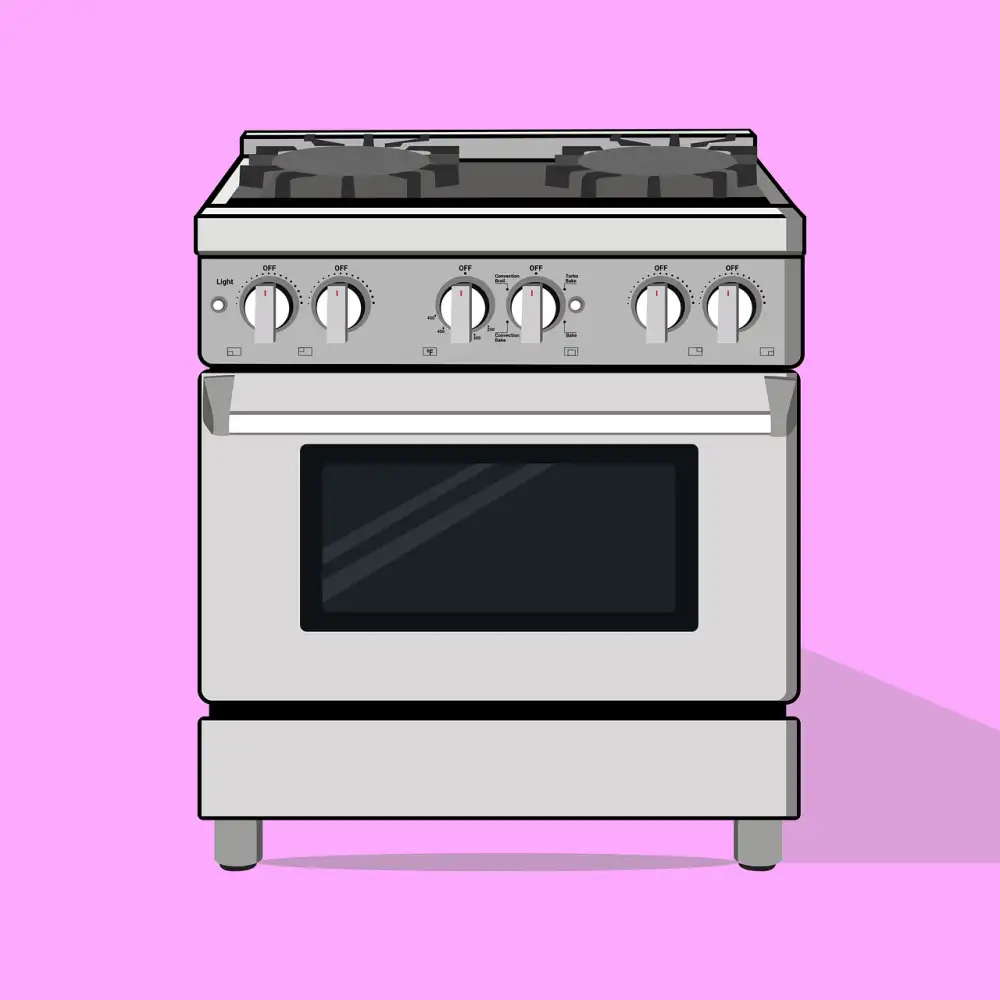Mastering the Art of Cooking with a Convection Oven: A Step-by-Step Guide for Home Chefs

- Understanding the Basics of Convection Cooking
- Preheating the Convection Oven
- Adjusting Cooking Time and Temperature
- Proper Placement of Food in the Convection Oven
- Using the Convection Oven for Baking
- Roasting and Broiling in a Convection Oven
- Tips for Cleaning and Maintaining Your Convection Oven
- Safety Precautions When Using a Convection Oven
Convection ovens have revolutionized the way we cook, offering faster and more efficient cooking results. Unlike traditional ovens, which rely on radiant heat, convection ovens use a fan to circulate hot air evenly around the food. This not only reduces cooking time but also ensures that dishes are cooked more evenly. Whether you're a seasoned chef or a beginner in the kitchen, mastering the art of cooking with a convection oven can take your culinary skills to new heights. In this guide, we will explore the basics of convection cooking and provide step-by-step instructions on how to make the most of your convection oven. So let's dive in and unlock the full potential of this remarkable kitchen appliance!
Understanding the Basics of Convection Cooking
Convection cooking is a method that utilizes the circulation of hot air to cook food evenly and efficiently. Unlike traditional ovens, which rely on radiant heat, convection ovens have a fan that helps distribute the heat throughout the oven cavity.
The circulating hot air in a convection oven speeds up the cooking process, resulting in faster cooking times. This is especially beneficial when roasting meats or baking pastries, as it helps to achieve a crispy exterior while maintaining moisture inside.
One important aspect to understand about convection cooking is that it requires lower temperatures than conventional cooking methods. The hot air movement allows for more efficient heat transfer, so you'll typically need to reduce the temperature by about 25 degrees Fahrenheit compared to what a recipe calls for when using a conventional oven.
It's also worth noting that convection cooking can cause foods to cook faster than expected. Therefore, it's essential to keep an eye on your dishes and occasionally check for doneness earlier than usual.
By understanding these basics of convection cooking, you'll be able to take full advantage of your convection oven's capabilities and create delicious meals with ease.
Preheating the Convection Oven
Before you start cooking with your convection oven, it is essential to preheat it. Preheating ensures that the oven reaches the desired temperature and allows for even cooking throughout the entire process.
To preheat your convection oven, simply set the temperature to the desired level and allow it to heat up for about 10-15 minutes. This will give the oven enough time to reach its optimal temperature and ensure that your food cooks evenly.
During the preheating process, make sure to remove any racks or trays that are not needed for your recipe. This will allow for better airflow and more efficient cooking.
It's important to note that convection ovens tend to heat up faster than traditional ovens, so keep an eye on the timer to prevent overcooking. Once the oven has reached its desired temperature, you can proceed with placing your food inside and begin cooking.
By preheating your convection oven, you are setting yourself up for success in achieving perfectly cooked meals every time. So don't skip this crucial step and enjoy the benefits of a well-preheated convection oven in your culinary adventures.
Adjusting Cooking Time and Temperature
One of the key benefits of cooking with a convection oven is its ability to cook food faster and more evenly. However, it's important to note that cooking time and temperature may need to be adjusted when using a convection oven.
In general, you can reduce the cooking time by about 25% when using a convection oven compared to a conventional oven. This is because the hot air circulation in a convection oven helps to cook food faster.
When it comes to adjusting the temperature, you can typically lower it by about 25 degrees Fahrenheit (or 15 degrees Celsius) when using a convection oven. This is because the fan in the oven helps to distribute heat more efficiently, resulting in even cooking at lower temperatures.
However, it's always best to refer to your specific convection oven's manual for recommended temperature and time adjustments. Different models may have different guidelines, so it's important to follow them for optimal results.
By adjusting the cooking time and temperature accordingly, you'll be able to achieve perfectly cooked dishes every time you use your convection oven.
Proper Placement of Food in the Convection Oven
Proper placement of food in a convection oven is crucial for achieving even and consistent cooking results. Unlike traditional ovens, convection ovens use a fan to circulate hot air, which can affect the cooking process. Here are some tips for placing your food correctly:
1. Use shallow and flat pans: Opt for shallow and flat pans rather than deep ones. This allows the hot air to circulate around the food more efficiently, ensuring even cooking.
2. Leave space between dishes: Avoid overcrowding the oven by leaving enough space between dishes. This allows the hot air to flow freely around each item, preventing uneven cooking or steaming.
3. Use baking sheets with low sides: When baking cookies or pastries, use baking sheets with low sides instead of those with high edges. This promotes better airflow and browning.
4. Position larger items on lower racks: If you're cooking multiple items simultaneously, place larger or thicker items on lower racks. This ensures they receive more direct heat and cook evenly.
5. Rotate halfway through cooking: To ensure even browning, rotate your dishes halfway through the cooking process. This helps prevent one side from becoming overcooked while the other remains undercooked.
By following these placement guidelines, you can maximize the efficiency of your convection oven and achieve perfectly cooked meals every time.
Using the Convection Oven for Baking
One of the greatest advantages of a convection oven is its ability to produce perfectly baked goods. The circulating hot air ensures even heat distribution, resulting in evenly baked cakes, cookies, and pastries.
To get started, preheat your convection oven to the recommended temperature for your recipe. It's important to note that most recipes will require a slightly lower temperature and shorter cooking time when using a convection oven.
When placing your baking pans or trays in the oven, make sure to leave enough space between them for proper air circulation. This will prevent uneven baking and ensure that all sides of your baked goods are cooked to perfection.
It's also crucial to use the right type of bakeware. Opt for light-colored pans as they reflect heat better than dark ones. Avoid using glass or ceramic dishes as they may not distribute heat as efficiently.
Keep an eye on your baked goods while they're in the convection oven, as they tend to cook faster than in a conventional oven. To prevent over-browning, you may need to reduce the cooking time by 10-15%. It's always best to check for doneness using a toothpick or cake tester.
Remember that convection ovens can be used for various types of baking, including bread, pies, and pastries. Experiment with different recipes and adjust cooking times accordingly until you find the perfect settings for each dish.
With practice and experimentation, you'll soon become a master at using your convection oven for baking delicious treats that are evenly cooked and have a beautiful golden crust.
Roasting and Broiling in a Convection Oven
Roasting and broiling are two popular cooking techniques that can be easily mastered with a convection oven. When roasting, the hot air circulation in a convection oven ensures even cooking and browning of meats and vegetables. To achieve the best results, it is recommended to use a shallow roasting pan and place the food on a wire rack to allow air to circulate around it.
When broiling in a convection oven, the intense heat from the top element quickly sears and caramelizes the surface of foods, creating a delicious crispy texture. It is important to adjust the cooking time and temperature accordingly, as the convection setting may cook food faster than traditional methods.
To broil effectively, it is advisable to use a broiler pan or a baking sheet lined with aluminum foil to catch any drippings. Position the food closer to the heating element for quicker browning, but be cautious not to burn it. Keep an eye on the food as it broils since cooking times can vary depending on thickness and desired doneness.
Whether you are roasting or broiling in your convection oven, remember to preheat it beforehand for optimal results. This will ensure that your food cooks evenly and efficiently. With practice, you will soon become adept at using your convection oven for these versatile cooking techniques, unlocking endless culinary possibilities in your kitchen.
Tips for Cleaning and Maintaining Your Convection Oven
1. Regularly clean the interior of your convection oven by wiping it down with a damp cloth or sponge. Be sure to remove any food particles or spills that may have accumulated during cooking.
2. For stubborn stains or baked-on residue, mix a solution of warm water and mild dish soap. Use a soft scrub brush or non-abrasive sponge to gently scrub away the dirt. Avoid using harsh chemicals or abrasive cleaners, as they can damage the oven's interior.
3. Clean the oven racks separately by soaking them in warm, soapy water for a few hours. Scrub off any remaining grime with a sponge or brush, then rinse thoroughly before placing them back into the oven.
4. To prevent odors and keep your convection oven smelling fresh, place a small bowl of white vinegar on the bottom rack while running a self-cleaning cycle. This will help eliminate any lingering smells.
5. It's important to regularly check and clean the convection fan and vents to ensure proper airflow. Use a soft brush or vacuum attachment to remove any dust or debris that may have accumulated.
6. Don't forget to clean the exterior of your convection oven as well! Wipe it down with a damp cloth and mild detergent, then dry thoroughly with a soft towel.
7. Lastly, schedule regular maintenance checks with a professional technician to ensure that all components of your convection oven are functioning properly and efficiently.
By following these cleaning and maintenance tips, you can prolong the lifespan of your convection oven and continue enjoying delicious meals cooked to perfection!
Safety Precautions When Using a Convection Oven
1. Read the instruction manual: Familiarize yourself with the specific safety guidelines provided by the manufacturer. Each convection oven may have unique features and precautions.
2. Use oven mitts: The interior of a convection oven can reach high temperatures, so always wear heat-resistant gloves or oven mitts when handling hot dishes or trays.
3. Keep children and pets away: Ensure that young children and pets are kept at a safe distance from the convection oven while it is in use to prevent accidents or burns.
4. Avoid overcrowding: Do not overload the oven with too many dishes or trays, as this can obstruct airflow and lead to uneven cooking or potential damage to the oven.
5. Use proper cookware: Only use cookware that is labeled as safe for use in a convection oven. Avoid using glass dishes that are not specifically designed for convection cooking, as they may shatter due to rapid temperature changes.
6. Monitor cooking progress: Regularly check on your food while it is cooking to prevent overcooking or burning. Adjust cooking time and temperature if necessary.
7. Ventilate the kitchen: When using a convection oven, it is normal for some steam and heat to be released into the kitchen. To avoid excessive heat buildup, ensure proper ventilation by opening windows or using an exhaust fan.
8. Clean regularly: Keep your convection oven clean by removing any food debris or grease buildup after each use. This will help prevent smoke, odors, and potential fire hazards.
By following these safety precautions, you can enjoy the benefits of cooking with a convection oven while ensuring a safe culinary experience for yourself and your loved ones.
In conclusion, mastering the art of cooking with a convection oven can elevate your culinary skills to new heights. By understanding the basics of convection cooking, preheating the oven correctly, and adjusting cooking time and temperature, you can achieve perfectly cooked meals every time. Proper placement of food in the oven ensures even heat distribution, while utilizing the convection feature for baking, roasting, and broiling adds a delicious touch to your dishes. Remember to clean and maintain your oven regularly for optimal performance. Lastly, always prioritize safety when using a convection oven. With practice and these guidelines in mind, you'll be well on your way to becoming a convection oven expert!
Published: 19. 12. 2023
Category: Home



